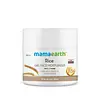What's inside
What's inside
 Key Ingredients
Key Ingredients

 Benefits
Benefits

 Concerns
Concerns

 Ingredients Side-by-side
Ingredients Side-by-side

Water
Skin ConditioningSodium Laureth Sulfate
CleansingSodium Chloride
MaskingGlycerin
HumectantCocamidopropyl Betaine
CleansingParfum
MaskingLauryl Hydroxysultaine
CleansingSodium Salicylate
PreservativeSodium Benzoate
MaskingGlycol Distearate
EmollientPolyquaternium-7
Citric Acid
BufferingCoco-Glucoside
CleansingTetrasodium EDTA
PEG-150 Pentaerythrityl Tetrastearate
EmulsifyingGlyceryl Oleate
EmollientGlyceryl Stearate
EmollientPPG-2 Hydroxyethyl Cocamide
EmulsifyingLactose
HumectantWhey Protein
Skin ConditioningPrunus Amygdalus Dulcis Seed Extract
Skin ConditioningSine Adipe Lac
Skin ConditioningPrunus Amygdalus Dulcis Oil
Skin ConditioningHexyl Cinnamal
PerfumingLinalool
PerfumingWater, Sodium Laureth Sulfate, Sodium Chloride, Glycerin, Cocamidopropyl Betaine, Parfum, Lauryl Hydroxysultaine, Sodium Salicylate, Sodium Benzoate, Glycol Distearate, Polyquaternium-7, Citric Acid, Coco-Glucoside, Tetrasodium EDTA, PEG-150 Pentaerythrityl Tetrastearate, Glyceryl Oleate, Glyceryl Stearate, PPG-2 Hydroxyethyl Cocamide, Lactose, Whey Protein, Prunus Amygdalus Dulcis Seed Extract, Sine Adipe Lac, Prunus Amygdalus Dulcis Oil, Hexyl Cinnamal, Linalool
Water
Skin ConditioningButylene Glycol
HumectantOryza Sativa Extract
AbsorbentGlycerin
HumectantMaris Aqua
HumectantGlycine Soja Seed Extract
Skin ConditioningGlycine Soja Extract
Skin ConditioningPotassium Sorbate
PreservativeCitric Acid
BufferingHydrogenated Polyisobutene
EmollientNeopentyl Glycol Diheptanoate
EmollientNiacinamide
SmoothingHydroxyethyl Urea
HumectantAmmonium Acryloyldimethyltaurate Crosspolymer
Emulsion StabilisingSodium Hydroxide
BufferingN-Vinyl Pyrrolidone
Phenoxyethanol
PreservativeEthylhexylglycerin
Skin ConditioningGlyceryl Glucoside
HumectantSaccharide Isomerate
HumectantSodium Citrate
BufferingAloe Barbadensis Leaf
MaskingPolyacrylamide
C13-14 Isoparaffin
EmollientLaureth-7
EmulsifyingSilica
AbrasiveAphanothece Sacrum Polysaccharide
AbsorbentDisodium EDTA
Sodium Hyaluronate
HumectantWater, Butylene Glycol, Oryza Sativa Extract, Glycerin, Maris Aqua, Glycine Soja Seed Extract, Glycine Soja Extract, Potassium Sorbate, Citric Acid, Hydrogenated Polyisobutene, Neopentyl Glycol Diheptanoate, Niacinamide, Hydroxyethyl Urea, Ammonium Acryloyldimethyltaurate Crosspolymer, Sodium Hydroxide, N-Vinyl Pyrrolidone, Phenoxyethanol, Ethylhexylglycerin, Glyceryl Glucoside, Saccharide Isomerate, Sodium Citrate, Aloe Barbadensis Leaf, Polyacrylamide, C13-14 Isoparaffin, Laureth-7, Silica, Aphanothece Sacrum Polysaccharide, Disodium EDTA, Sodium Hyaluronate
Ingredients Explained
These ingredients are found in both products.
Ingredients higher up in an ingredient list are typically present in a larger amount.
Citric Acid is an alpha hydroxy acid (AHA) naturally found in citrus fruits like oranges, lemons, and limes.
Like other AHAs, citric acid can exfoliate skin by breaking down the bonds that hold dead skin cells together. This helps reveal smoother and brighter skin underneath.
However, this exfoliating effect only happens at high concentrations (20%) which can be hard to find in cosmetic products.
Due to this, citric acid is usually included in small amounts as a pH adjuster. This helps keep products slightly more acidic and compatible with skin's natural pH.
In skincare formulas, citric acid can:
While it can provide some skin benefits, research shows lactic acid and glycolic acid are generally more effective and less irritating exfoliants.
Most citric acid used in skincare today is made by fermenting sugars (usually from molasses). This synthetic version is identical to the natural citrus form but easier to stabilize and use in formulations.
Read more about some other popular AHA's here:
Learn more about Citric AcidGlycerin is already naturally found in your skin. It helps moisturize and protect your skin.
A study from 2016 found glycerin to be more effective as a humectant than AHAs and hyaluronic acid.
As a humectant, it helps the skin stay hydrated by pulling moisture to your skin. The low molecular weight of glycerin allows it to pull moisture into the deeper layers of your skin.
Hydrated skin improves your skin barrier; Your skin barrier helps protect against irritants and bacteria.
Glycerin has also been found to have antimicrobial and antiviral properties. Due to these properties, glycerin is often used in wound and burn treatments.
In cosmetics, glycerin is usually derived from plants such as soybean or palm. However, it can also be sourced from animals, such as tallow or animal fat.
This ingredient is organic, colorless, odorless, and non-toxic.
Glycerin is the name for this ingredient in American English. British English uses Glycerol/Glycerine.
Learn more about GlycerinWater. It's the most common cosmetic ingredient of all. You'll usually see it at the top of ingredient lists, meaning that it makes up the largest part of the product.
So why is it so popular? Water most often acts as a solvent - this means that it helps dissolve other ingredients into the formulation.
You'll also recognize water as that liquid we all need to stay alive. If you see this, drink a glass of water. Stay hydrated!
Learn more about Water